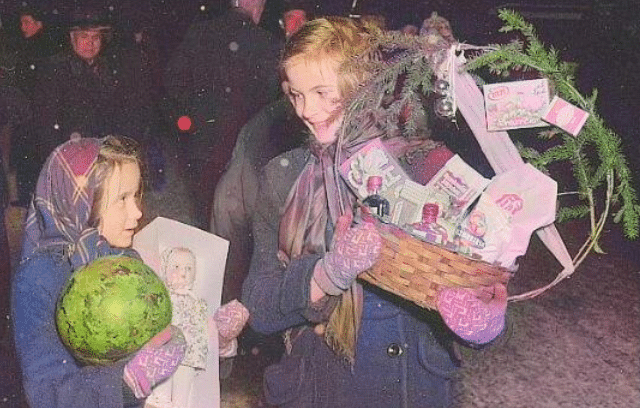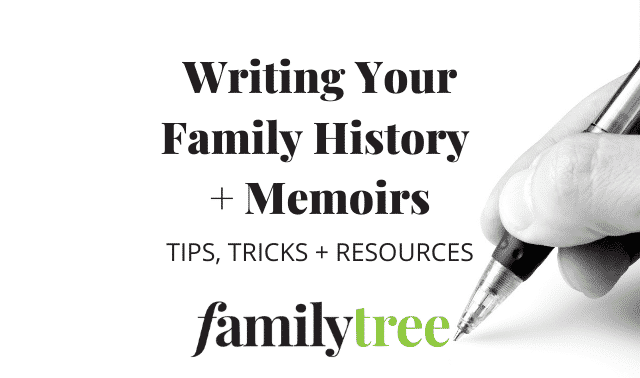
In this article:
Memory joggers and writing prompts
Heritage album scrapbook or photo book helpers
You’ve been pestering your relatives all year to record their life stories for posterity. So this holiday season, instead of another cookbook or golf shirt, why not present Mom, Granddad and Aunt Lu — even yourself — with a gift the whole family can appreciate? Online and local booksellers brimming with legacy books — tomes designed to help people put their memories on paper.
Legacy books help with those “I don’t know how to begin” and “my life isn’t all that interesting” excuses you’ll hear. Unlike a blank journal or an empty computer screen, they make life-story writing easy and enjoyable by giving guidance and prompts relevant to anyone’s life experiences. And there’s a type of legacy book for every personality, from the writing-shy to the super-creative. Look for books to fit your family members among these four categories:
1. Memory joggers and writing prompts
One category of legacy books is what I call “memory joggers.” This type of book doesn’t provide space to write your answers, but it does offer you endless topic ideas for journal writing, oral history interviews or inspiration to write a life story. With memory joggers, your kin have the flexibility to write as little or as much as they want on each topic, in whatever format they choose.
To Our Children’s Children: Preserving Family Histories for Generations to Come by Bob Greene and D.G. Fulford (Doubleday) is a classic for jump-starting your family history. This step-by-step guide will help create personal histories from people’s memories. A reader in Indiana wrote a review on Amazon.com that will give you goose bumps: “I bought this book for my father in November for a Christmas gift but gave it to him as soon as I received it. He got busy on it right away on his computer and wrote a 13-page history of his life. He passed away Dec. 29. My gift for him turned into a gift for me….” This story shows how urgent it is to get those life stories recorded now.
Author and StoryStudio Chicago writing instructor Annette Gendler knows a thing or two about helping writers put pen to paper (or fingers to keyboard). In How to Write Compelling Stories from Family History, she shares both writing prompts and step-by-step instructions for turning family anecdotes and even heirlooms into engaging stories. Additionally, there are tips for dealing with missing materials, methods for conducting research to preserve accuracy, and much more.
2. Memory journals
If you think your relatives might be more responsive to recording their life stories by answering questions, you’ll find plenty of Q&A legacy books, too. Some like David Hough’s book, A Lifetime of Memories: A Guided Journal for Your Grandma, Grandpa or Parent to Record Their Memories and Life Experiences (independently published), have the look and feel of a journal. Others are presented as coffee-table books. An advantage of fill-in formats is that the person responds in his or her own handwriting — something that’s lost when you record memories on a computer.
Dad, I Want to Hear Your Story: A Father’s Guided Journal To Share His Life & His Love and Mom, I Want to Hear Your Story: A Mother’s Guided Journal To Share Her Life & Her Love (independently published) are two journals Jeffery Mason created for parents to give to their children. Get yourself one to fill in and give it to your child as a unique gift. Although they look like they’re meant for young children, your grown-up kids will appreciate these journals most of all.
Need a quick and easy way to jot down your own, or someone else’s, memories? Family Tree Magazine contributor Sunny Morton created Story of My Life: A Workbook for Preserving Your Legacy to take the guesswork out of what to record for future generations. Complete with fill-in pages, writing prompts, and advice to help reconstruct memories from long ago, this workbook is a great starting point to being writing a memoir.
3. Memoir writing guides
Maybe cousin Al likes to write, but you’re having trouble inspiring him to get going on his autobiography. After all, where do you begin when you have half a century or more to write about? Guides such as Living Legacies: How to Write, Illustrate, and Share Your Life Stories by Duane Elgin and Coleen LeDrew (Conari Press) show writers how to combine illustrations, photographs, memorabilia and other family treasures into a life story. From the first step to the completed project, you’ll find memory prompts, sample stories, ideas, advice on finding your writer’s voice and guidance to select materials to include in your story.
But what if Mom doesn’t think she’s a good writer, or worries the task is too big to take on? Richard Campbell’s Writing Your Legacy: The Step-by-Step Guide to Crafting Your Life Story (Writer’s Digest Books) is a good choice. Written for busy folks and people who think they have no writing skills, this guide makes it easy and fun. It’s filled with a series of 35 guided themes, as well as supplementary exercises, to explore milestones, relationships, career paths, and major choices, and leave an eloquent record of your life for future generations. The emphasis here is to just tell stories: The format doesn’t matter as long as the memories get recorded.
4. Heritage album scrapbook or photo book helpers
If Aunt Lu still prefers scrapbooking to writing an autobiography or answering questions, there are several books just for her. In Crafting Your Own Heritage Album by Bev Kirschner Braun (Betterway Books), she’ll learn how to preserve photographs, records and heirlooms with archival-safe materials as she weaves genealogy, family lore and tradition into a special heritage album. In the second book, she’ll discover new page-layout ideas and ways to preserve and present oral history interviews and family memorabilia. Braun’s New Ideas for Crafting Heritage Albums (Betterway Books) has suggestions for using a scanner to restore old photographs and for turning a heritage scrapbook into a family activity.
In Making Heritage Scrapbook Pages (Hot Off the Press, Inc.), Aunt Lu will learn how to organize heirloom photographs and safely adhere them to scrapbook pages. This book comes with dozens of patterned papers designed to enhance black-and-white photographs. Basic, easy-to-follow instructions help with page layouts, journaling and other scrapbook-design techniques. And since no memory album is complete without journaling, there’s a short question section to prompt Aunt Lu to write about her life.
Many of the recommendations in these books can also be applied to photo books. Use them for page layouts and other design ideas.
Giving your relatives a legacy book is just the first step — your next challenge is to get Mom, Pop, Grammy and Great-uncle Harry to fill in the books or complete the projects. Rather than simply nagging, dangle a reward in front of them. Include homemade “coupons” for whatever would give them incentive to fill in a page, such as “Complete page 45 and redeem for one free dinner at the Olive Garden” or “Finish the project in chapter two for one game of golf on me.” As they preserve their own memories, you’ll also be creating new, shared ones.
A version of this article appeared in the December 2001 issue of Family Tree Magazine.
Related Reads
FamilyTreeMagazine.com is a participant in the Amazon Associates Program, an affiliate advertising program. It provides a means for this site to earn advertising fees, by advertising and linking to Amazon and affiliated websites.








